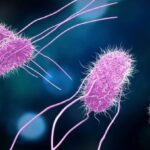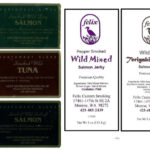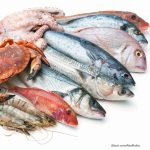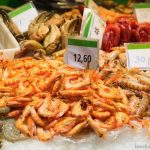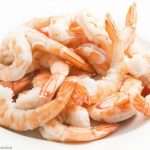Felix Custom Smoking has been enjoined from distributing seafood products through a consent decree filed on March 9, 2022 by the FDA and the U.S. Justice Department. The owner of that establishment, Diane Zollinger, has allegedly violated the Federal Food, Drug, and Cosmetic Act (FDCA) by distributing "adulterated ready-to-eat seafood products, including fish jerky and cold- and hot-smoked salmon," according to the complaint. The business sells products directly to consumers from its location and through farmers markets, as well as providing custom processing for fishermen and other wholesalers. The facility is located in Monroe, Washington. The claims made in the complaint are allegations that, if the case were to proceed to trail, the government must prove by a preponderance of … [Read more...]
Nine Multistate Salmonella Outbreaks in 2021 Sickened More Than 1,200
Nine multistate Salmonella outbreaks in 2021 sickened more than 1,200 Americans and hospitalized 250, according to the Centers for Disease Control and Prevention (CDC). The only Salmonella outbreak that has continued into 2022 is the Salmonella Oranienburg outbreak linked to fresh onions imported from Mexico. All of these outbreaks were linked to a specific product, and all were associated with at least one recall or public health alert. The outbreaks include: Plainville Farms ground turkey Salmonella Hadar outbreak In this outbreak, 33 people in 14 states were sickened and four were hospitalized. The patient case count by state was: Arizona (1), Connecticut (2), Indiana (1), Maine (1), Maryland (1), Massachusetts (7), Missouri (2), New Hampshire (1), New Jersey (3), New York (4), … [Read more...]
Do You Know How To Buy and Serve Fresh Seafood?
Fresh seafood is a part of a healthy and balanced diet. But do you know how to buy and serve fresh seafood? These foods can cause food poisoning if not handled safely. The FDA has tips to help you. When buying fresh seafood there are things to look for. First of all, fish should not "smell." It should have a mild and fresh aroma and not small sour, "fishy," or like ammonia. A whole fish's eyes should be clear and shiny, and the flesh should be firm and spring back when pressed. Fish fillets should not be discolored or be drying around the edges. Shellfish such as shrimp, lobster, and scallops should be clear with a pearl-like color and no odor. Packaged fresh seafood with time/temperature indicators should only be purchased if the indicator shows the product is safe to eat. And … [Read more...]
FDA Complaint Filed Against Michel Cordon Bleu for Adulterated Seafood
The United States filed a civil complaint against Michel Cordon Bleu Inc. of Los Angeles, California to prevent the distribution of adulterated seafood products on Tuesday, October 3, 2017. This complaint was filed in the US. District Court for the Central District of California. The Court was asked for a permanent injunction to shut down the facility which is located at 3625 South Western Avenue in Los Angeles. That company prepares, processed, packs, holds, and distributes vacuum-packed, ready-to-eat cold and hot smoked fish and fishery products. The complaint alleges that Michel Cordon Bleu and Michel G. Blanchet adulterated seafood products by "preparing, packing, or holding them under insanitary conditions whereby the seafood may have become contaminated with filth or may … [Read more...]
Warning About Seafood in California Updated by CDPH
The California Department of Public Health is updating its warning to consumers about some seafood caught along the coast. Dungeness and Rock crabs, along with mussels and clams in some counties should not be eaten because they may contain high levels of domoic acid, a toxin. No illnesses have been reported to date in connection with the consumption of these fish. Consumers should not eat recreationally and commercially caught Dungeness and Rock crabs caught in the waters between the Oregon border and the southern Santa Barbara County line. The advisory has been extended to recreationally harvested bivalve shellfish (mussels and clams) from Humboldt and Del Norte counties. The white meat (adductor muscle) of scallops caught in those areas can be eaten, but the viscera should be … [Read more...]
Study Reveals Misrepresentation of Shrimp in Markets
A study conducted by Oceana has revealed misrepresentation of America's favorite seafood - shrimp - across the country. DNA testing has confirmed that 30% of shrimp products purchased from 111 grocery stores and restaurants were misrepresented. Misrepresentation means that the shrimp were mislabeled, with one species substituted for another; misleading, with farmed species labeled as "Gulf shrimp", for instance; or mixed/mystery, with species commingled among bagged shrimp. The misrepresentation was found everywhere in the country. The highest rates of misrepresentation were in New York at 43%, 33% in Washington, D.C., and 30% in the Gulf of Mexico region. This problem makes it difficult for consumers to make informed choices about the shrimp they purchase in stores and in … [Read more...]
National Seafood Month Food Safety Tips
October is National Seafood Month and the U.S. Food and Drug Administration has compiled some food safety tips to help consumers makes smart choices and reduce the risk of food poisoning. They are as follows: Buying Fresh Fish or Shrimp? If something smells fishy, don’t buy it. Fish should be odorless or should have the clean smell of the ocean. It should not smell fishy, sour or like ammonia. Whole fish should have firm, shiny flesh; clear, slightly bulged eyes and red gills that are free of slime. Shrimp should also be odorless. Its flesh should be shiny and translucent. Don’t buy seafood that is not refrigerated or displayed on a bed of ice. Buying Fresh Shellfish? Look for labels or tags on sacks of live shellfish that have information such as the processor’s certification … [Read more...]
Environmental Working Group Releases Seafood Guide
Environmental Working Group has released a "Good Seafood Guide" that helps consumers consume fish and shellfish that are high in Omega-3 fatty acids, low in mercury, and harvested from sustainable sources. The agency offers a calculator, a guide to seafood, and an FAQ on how much seafood people should eat. The calculator lets you input weight, age, gender, pregnancy status, and heart disease condition. A personalized list of which fish to eat will be generated which includes more than 80 species. The seafood is divided into five categories: Best Bets, which include wild salmon and sardines; Good Choices, which include Oysters and Pollock; Low Mercury but Low Omega-3s, which include Shrimp, Tilapia, and Scallops; Mercury Risks Add Up, which include Halibut and Lobster; and Avoid, which … [Read more...]

